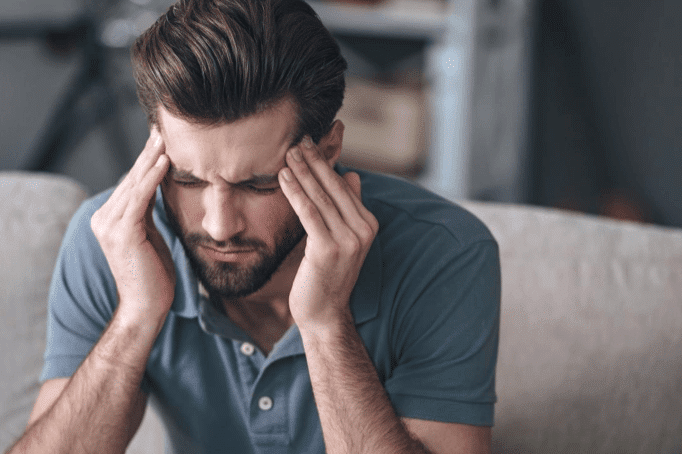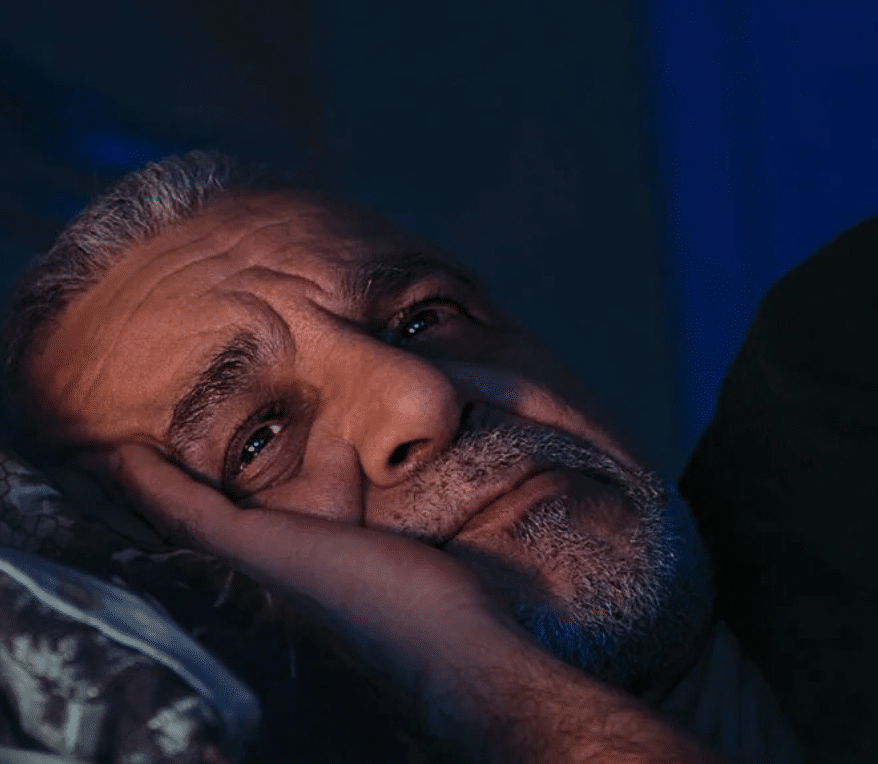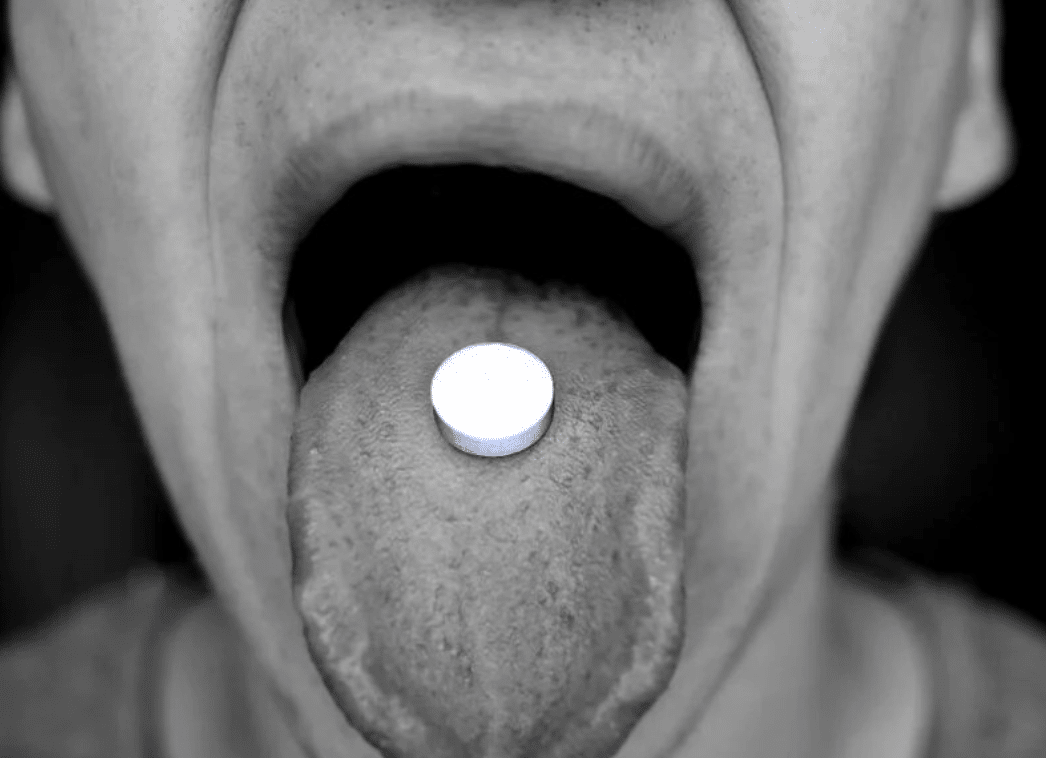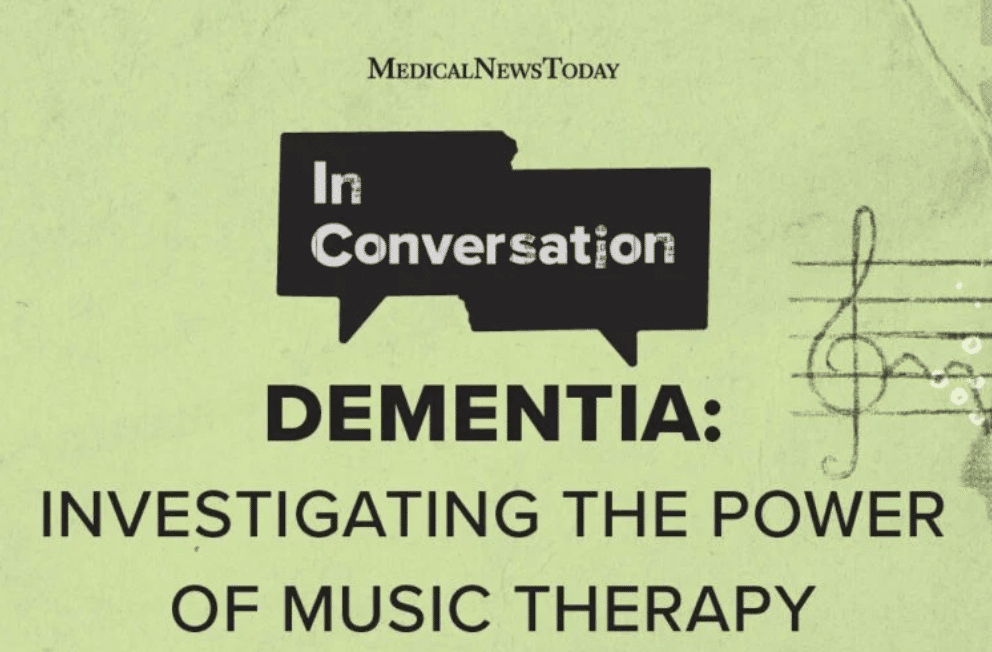Headaches are a common complaint. According to the World Health Organization, most people will experience a headache from time to time.
While they can be sometimes painful and debilitating, the majority can be treated with simple painkillers and will go away within several hours. However, repeated attacks or certain types of headache could be a sign of something more serious.
This article looks at some of the most common types of headaches, along with their causes, treatment, prevention, and when to see a doctor.
The International Classification of Headache Disorders (ICHD) defines more than 150 different types of headaches. These are divided into two main categories: primary and secondary.
Primary headaches
A primary headache is one that is not caused by another condition — it is the condition itself. Examples include migraine and tension headache.
1. Migraines

Migraines are categorized as a primary headache, and are often accompanied by visual disturbances.
A person who has a migraine will characteristically feel an intense throbbing pain on just one side of the head.
The person may experience a heightened sensitivity to light, sound, and smell. Nausea and vomiting are also common.
Around a third of people experience an aura before the onset of a migraine. These are visual and sensory disturbances that typically last between 5 and 60 minutes. They can include:
- seeing zig-zagging lines, flickering lights, or spots
- partial loss of vision
- numbness
- pins and needles
- muscle weakness
- difficulty speaking
Be aware that aura symptoms could also indicate stroke or meningitis. Anyone experiencing them for the first time should see a doctor immediately.
Migraines tend to be recurrent, and each attack may last up to 3 days. For many, it is a life-long condition.
Although a migraine can occur in both adults and children, it is three times more likely to develop in females than males. Attack frequency can range from several times a week to once a year.
The causes of migraine are not fully understood. However, it often runs in families. Migraines are also more common in people with certain pre-existing conditions, such as depression and epilepsy.
Triggers of migraine could include:
- stress and anxiety
- sleep disruption
- hormonal changes
- skipped meals
- dehydration
- some foods and medications
- bright lights and loud noise
Over-the-counter (OTC) painkillers, such as ibuprofen or aspirin, can stop headaches or reduce pain and duration.
Doctors can prescribe an antiemetic drug to relieve nausea and vomiting, such as metoclopramide or ondansetron. Migraine-specific combination drugs are also available.
Attacks may also be eased by:
- resting in a dark, quiet place
- placing an ice pack or a cold cloth on the forehead
- drinking water
For more difficult-to-treat migraines, doctors may prescribe a type of drug called a triptan, such as sumatriptan or rizatriptan. A person should take all medications as soon as migraine symptoms begin for best effect.
People with chronic migraine should see a doctor about preventive treatment. A doctor may diagnose a person with chronic migraine if they have experienced headaches:
- on more than 15 days per month
- over a period of 3 months
- of which at least eight show symptoms of migraine
Drug options for migraine prevention include topiramate, propranolol, and amitriptyline. Other management choices to consider are dietary supplements, meditation, acupuncture, and neuromodulation therapy, which involves applying mild electrical pulses to the nerves.
2. Tension headaches
Tension headaches are very common, and most people will experience them occasionally. They present as a dull, constant pain felt on both sides of the head. Other symptoms can include:
- tenderness of the face, head, neck, and shoulders
- a feeling of pressure behind the eyes
- sensitivity to light and sound
These headaches normally last from 30 minutes to several hours. Severity can vary, but they rarely prevent normal activities.
The cause of tension headaches is unclear, but stress, anxiety, and depression are common triggers. Other potential triggers include:
- dehydration
- loud noise
- lack of exercise
- poor sleep
- bad posture
- skipped meals
- eye strain
OTC painkillers, such as ibuprofen, acetaminophen, and aspirin are usually very effective in stopping or reducing pain. Individuals experiencing a headache on more than 15 days per month over 90 days should see a doctor.
Lifestyle changes and some treatments may help prevent tension headaches. These can include:
- getting enough sleep
- regular exercise and stretching
- improving sitting and standing posture
- having an eye test
- management of stress, anxiety, or depression
- acupuncture
3. Cluster headaches

Cluster headaches may cause a painful burning sensation behind the eyes.
Cluster headaches are severe and recurrent headaches that are six times more likely to develop in men than in women. People describe an intense burning or piercing pain behind or around one eye.
Other symptoms can include:
- watering eye
- swollen eyelid
- a blocked or a runny nose
- sensitivity to light and sound
- restlessness or agitation
Cluster headaches are usually sudden, without warning, and last between 15 minutes and 3 hours. People can experience up to eight attacks a day.
Attacks tend to occur in daily clusters that can persist for weeks or months. They typically take place at the same time of day, which can often be a couple of hours after falling asleep at night.
Any person experiencing these symptoms — which can sometimes be mistaken for hay fever — should consult their doctor.
The cause of cluster headaches is unclear, but they are more likely to occur in smokers. People should avoid alcohol during attack periods.
Treatment aims to reduce the severity and frequency of the attacks. Options include:
- topiramate
- sumatriptan
- verapamil
- steroids
- melatonin
- oxygen therapy
- lithium
Doctors may suggest surgery in very difficult-to-treat cases.
4. Exertional headaches
Exertional headaches are brought on by strenuous physical exercise and can be triggered by:
- running
- jumping
- weight lifting
- sexual intercourse
- bouts of coughing or sneezing
These headaches are usually very short-lived but can sometimes last up to 2 days. They present as a throbbing pain felt throughout the head and are more common in those with a family history of migraine.
Individuals experiencing cluster headaches for the first time should see a doctor, as they could be a sign of something serious.
Most attacks can be treated with OTC painkillers. Taking a nonsteroidal anti-inflammatory drug (NSAID) or a beta-blocker before exertion can help prevent the headaches, as can warm-up exercises.
5. Hypnic headaches
A hypnic headache is a rare condition that usually begins for the first time in a person’s 50s but can start sooner. Also known as “alarm clock” headaches, they wake people during the night.
A hypnic headache consists of a mild-to-moderate throbbing pain usually felt on both sides of the head. It can last for up to 3 hours, and other symptoms may include nausea and sensitivity to light and sound.
People can experience several attacks each week. The cause of hypnic headaches is not understood, and there are no known triggers.
Although hypnic headaches are harmless, an older person who experiences any new kind of headache for the first time should see a doctor. Migraine and cluster headaches also need to be ruled out.
The leading treatment choice is caffeine, taken as tablets or as cups of coffee before bedtime. Other drug options include indomethacin, melatonin, and lithium.
Secondary headaches
A secondary headache is a symptom of something else, such as a headache resulting from a head injury or sudden caffeine withdrawal.
6. Medication-overuse headaches

Certain medication may cause frequent headaches when taken regularly.
A medication-overuse headache (MOH) — sometimes known as a rebound headache — is the most common type of secondary headache. A MOH is marked by frequent or daily headaches with symptoms similar to those of either tension headaches or migraines.
These headaches initially respond to painkillers but then reoccur sometime later.
MOH can result from taking painkillers on more than 15 days in a month. Drugs that can cause MOH include:
- opioids
- acetaminophen
- triptans, such as sumatriptan
- NSAIDs, such as aspirin and ibuprofen
A MOH can still occur despite taking these medications as directed. However, a MOH mainly seems to develop in people taking painkillers specifically for the treatment of a headache.
The only treatment for MOH is to stop taking the medication behind the headaches. Anybody stopping medication should do so under the supervision of a doctor. The doctor will able to help devise a plan and may be able to prescribe other medicines that can ease the withdrawal process.
Symptoms are likely to worsen before they improve after stopping the drug. Headaches will typically stop within 10 days.
Additional withdrawal symptoms usually go away within 7 days but may take up to 3 weeks. These include:
- nausea and vomiting
- increased heart rate
- sleep disturbance
- restlessness, anxiety, and nervousness
Most people revert to their original headache pattern within 2 months. After this, it should be safe to start retaking pain relief medication.
The following steps can help prevent MOH:
- avoiding the use of codeine
- taking painkillers for headaches on no more than 2 days in a week
- using preventive medications for a chronic migraine
7. Sinus headaches
Sinus headaches are caused by sinusitis — a swelling of the sinuses — which is usually the result of an infection or an allergy.
The symptoms consist of a dull, throbbing ache around the eyes, cheeks, and forehead. The pain may worsen with movement or straining and can sometimes spread to the teeth and jaw.
These headaches are usually accompanied by a thick green or yellow nasal discharge. Other symptoms may include blocked nose, fever, nausea, and light or sound sensitivity.
Sinus headaches are quite rare. If there are no nasal symptoms, a headache of this nature is more likely to be a migraine.
Sinus headaches can be treated with OTC painkillers and nasal decongestants. People should see a doctor if symptoms do not improve within a week.
A doctor may prescribe antibiotics if they think a bacterial infection has caused the headache, or antihistamines in the case of an allergy. Doctors may also prescribe a corticosteroid nasal spray to help reduce the swelling.
To diagnose the underlying cause of the sinusitis, a doctor may refer an individual to an ear, nose, and throat specialist. In some cases, surgical drainage may be required.
8. Caffeine-related headaches
Heavy caffeine consumption — more than 400 milligrams (mg), or around 4 cups of coffee — can sometimes lead to headaches.
In people consuming more than 200 mg of caffeine daily for over 2 weeks, withdrawal may result in migraine-like headaches. These typically develop within 24 hours after stopping abruptly. Other possible symptoms include:
- tiredness
- difficulty concentrating
- poor mood or irritability
- nausea
Symptoms are often relieved within an hour of caffeine intake or will resolve fully within 7 days after complete withdrawal.
The effects of caffeine vary from person to person, but reducing intake could decrease the risk of getting headaches. Limiting caffeine consumption is sometimes recommended for people who have chronic migraine.
9. Head-injury headaches

Head injuries, including those sustained in contact sports, may lead to headaches.
Minor bumps and blows to the head and neck are common and are usually nothing to worry about.
Sometimes, a headache may develop immediately or soon after. These are often similar to migraine or tension headaches and can usually be treated with OTC painkillers.
Anyone who experiences persistent or worsening headaches should see a doctor. Always call an ambulance for serious head injuries, or if someone experiences the following symptoms after any head injury:
- unconsciousness
- seizures
- vomiting
- memory loss
- confusion
- vision or hearing problems
Post-traumatic headaches can also develop months after the original head injury, making them difficult to diagnose. They can sometimes occur daily and persist for up to 12 months.
10. Menstrual headaches
Headaches are often related to changes in hormone levels. In women, migraine is frequently linked with periods due to natural changes in estrogen levels.
These menstrual migraines develop in the days just before or during a period, or sometimes during ovulation. Symptoms are similar to migraine without aura but can last longer or be more debilitating.
Hormone-related headaches can also be caused by:
- oral contraceptives
- the menopause
- pregnancy
Treatment for a menstrual headache is the same as the treatment for migraine without aura. Doctors can advise about possible preventive measures, such as:
- hormonal therapy
- taking a triptan or NSAID around the time of periods
- alternative oral contraception plans, such as omitting the pill-free break
- hormone replacement therapy for women undergoing menopause
11. Hangover headaches
Consuming too much alcohol can lead to a throbbing headache the next morning or even later that day. These migraine-like headaches are usually felt on both sides of the head and are made worse by movement. Someone who has a hangover headache may also experience nausea and sensitivity to light.
There are no cures for hangovers, but it is possible to relieve symptoms by drinking plenty of water and eating sugary foods. OTC painkillers may help reduce or stop the headache pain.
Symptoms of hangovers tend to go away within 72 hours.
The risk of getting a hangover can be reduced by:
- drinking in moderation
- not drinking on an empty stomach
- drinking water between alcoholic beverages and before going to bed
When to see a doctor
Most headaches are rarely a sign of something more serious and most people can manage them efficiently with OTC painkillers.
However, anyone who experiences severe, persistent, recurrent, or worsening headaches should consult a doctor. Medical assistance should be sought immediately for:
- headaches that come on very suddenly and are extremely painful
- recurring headaches in children
- headaches following a significant blow to the head
- headaches associated with confusion or disturbed vision, balance, or speech
- headaches associated with numbness or weakness
- headaches associated with fever, seizures, or unconsciousness
- headaches accompanied by a stiff neck or rash
- headaches associated with persistent vomiting
- How many pounds have you lost this month? At Dieta Efectiva you can lose 10-12 lbs your first week and 2 – 5 lbs every week after. Visit us dietaefectiva.net to learn more about our program
BG:MNT








